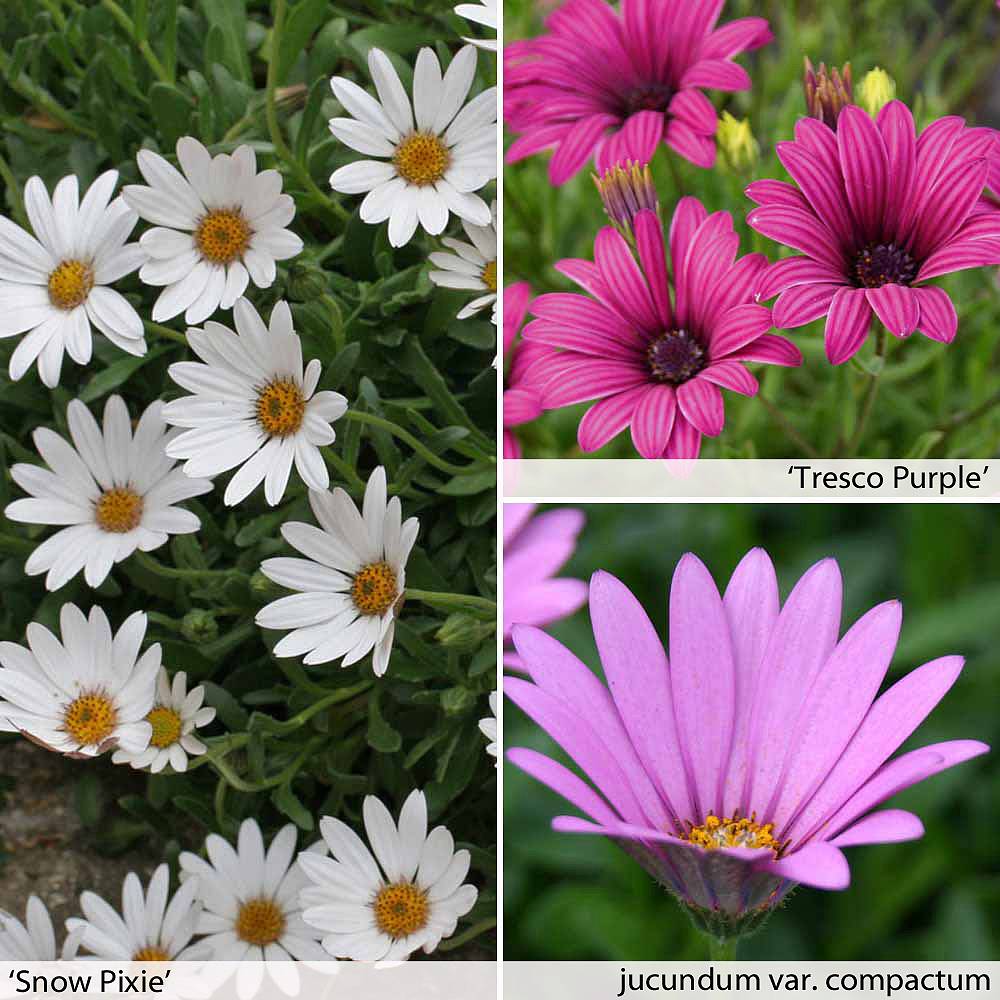Many of us are used to growing Osteospermum in our summer patio containers for their bright and cheerful daisy flowers. There are a wide array of beautiful varieties but they are not winter hardy in all but the very mildest areas of the UK. How many of us new though that there are a few varieties of Osteospermum that are totally winter hardy perennials that are so delightful and useful in our borders and containers?
These varieties of African daisies almost thrive on neglect. They prosper in dry, hot areas. They smother weeds with their low, ground cover growing habit with a height of around 15cm (6in) and a spread of around 90cm (36in). They also have a very long flowering period providing valuable colour from June to the first frosts.
Young plants should always be grown on in frost free conditions until established enough to be resilient to the winter weather. Once established they can be planted in our outdoor containers and borders in well drained soil in a warm, sunny and sheltered position. Grit can be added to the planting hole if you have very heavy, wet soil. Water and feed throughout the growing season. Deadheading is essential when in flower to ensure the long season of blooms. For more information on deadheading read my previous blog post Five reasons to deadhead your plants.
There are three hardy varieties that are highly recommended (pictured above) as follows:-
Osteospermum ‘Snow Pixie’ – A perfect contrast to its purple-pink coloured cousins, sporting clean, white petals with a golden yellow eye.
To view Osteospermum ‘Snow Pixie’ at Thompson & Morgan click here
Osteospermum ‘Tresco Purple’ – Bold pink daisy flowers open every morning to greet the sun.
To view Osteospermum ‘Tresco Purple’ at Thompson & Morgan click here
Osteospermum jucundum var. compactum – Irrepressibly cheerful, bright pink daisy flowers smother carpets of low growing foliage.
To view Osteospermum jucundum var. compactum at Thompson & Morgan click here
To view a collection of all three varieties at Thompson & Morgan click here
Mark Snelling
Images copyright Thompson & Morgan
If you have enjoyed reading our blog post then why not fill in the form provided to allow us to send you our blog posts and newsletters by email.

